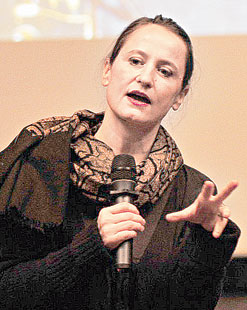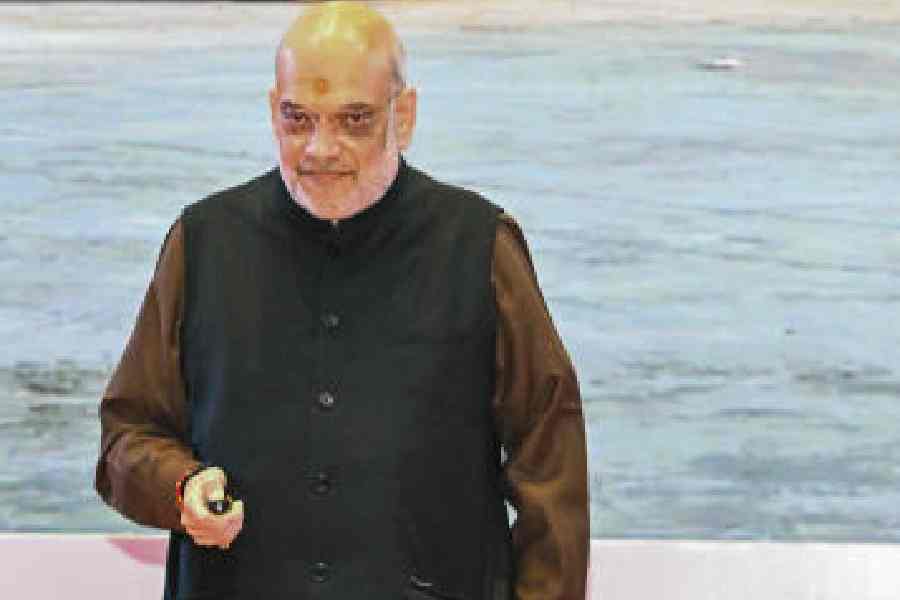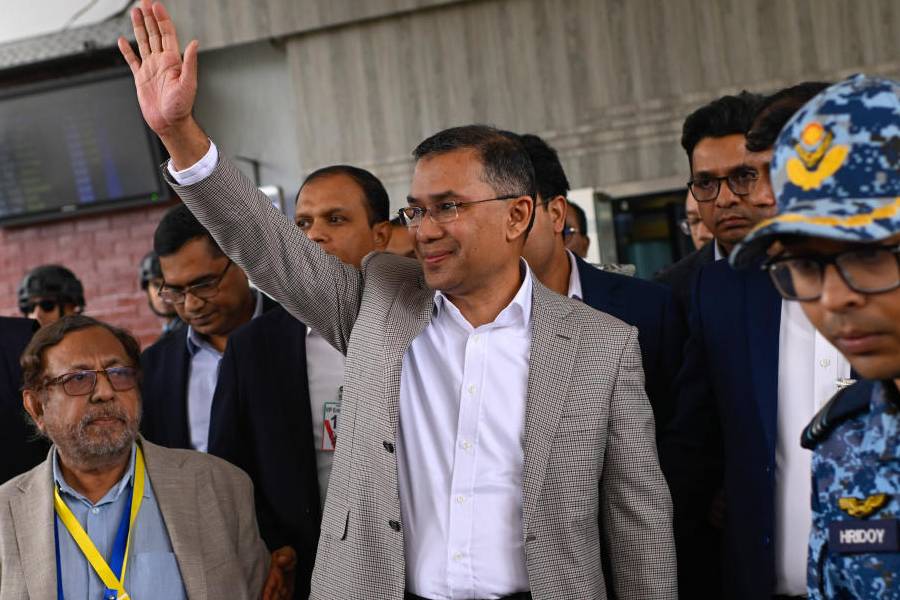 |  |
| Sasha Waltz at Max Mueller Bhavan on Saturday (picture left by Anindya Shankar Ray); Jorasanko Rajbati, the venue of Sasha’s Dialoge 2013 — Kolkata, as captured by architect and urban designer Tapio Snellman | |
Old buildings, unlike modern boxed flats, are a repository of dreams and memories that connect its past with the present. Such spaces stand out of time, and their magical presence goes beyond the romanticism of ruins.
Sasha Waltz, the radical German choreographer, is interested in observing changes that a city undergoes over a period of time. This was just one of the reasons why she chose to work in a palace of north Calcutta instead of theatres in other Indian metropolises for “theatres are almost the same everywhere,” she said at Max Mueller Bhavan on Saturday evening, when a film on her by Brigitte Kramer was screened.
On her earlier visit to the city last August, she had pronounced her “fascination for decay”, and on a trip to Pathuriaghata and its peripheries she fell for Jorasanko Rajbati, the deep salmon pink palace on Chitpur.
This is where Dialoge 2013 — Kolkata will be performed on January 12, 13 and 14. It is a production of Sasha Waltz & Guests in an event of Germany and India 2011-2012 Infinite Opportunities. It is a co-production with the Goethe Institut/Max Mueller Bhavan, Calcutta in cooperation with the Bharatanatyam dancer, Padmini Chettur, a disciple of the choreographer Chandralekha, and Mahler Chamber Orchestra, whose members regularly form a variety of small ensembles — a flexible format that allows for experimentation with repertoire, concert formats, and venues that is fundamental to the character of the orchestra.
Thirteen dancers from Waltz’s company will encounter Padmini Chettur and her ensemble accompanied by soloists of the orchestra, and together explore this north Calcutta district.
It is likely to be a first-of-its-kind production in this city at least, for the dancers will move from the courtyard with the thakurdalan to the gallery around it and into the room of Arpita Sardar, a daughter of the family. The viewers — tickets will be available for only 200 every day — are expected to follow the dancers, whichever direction they want to. Like the musicians, even viewers interact with the dancers. It has theatre, but not Pina Bausch’s Tanztheater.
Sasha has choreographed operas like Purcell’s Dido and Aeneas where old music confronts contemporary dance. Dialoge 2013 — Kolkata “will not be a product but a creation. I wanted to be closer to the city, spend more time and exchange. I wanted to have a look at the city from different angles. There is a dialogue with the family that lives there but we carry our memories and luggage as well,” said Waltz.
She said in her quest for form, she likes the “limitations” posed by the structure of the building. There will be exchange at all levels. The costume designer is from Berlin but they are being made here. She has worked earlier with Padmini Chettur, and together they will create two worlds encountering each other.
Tapio Snellman, architect and urban designer, who is designing five projections plans to focus on the building opposite the venue to build bridges with the surroundings. But it is all in a fluid state now.
Sasha Waltz’s engagements with architecture are nothing new. Her company has performed Dialoge ‘99/II in the Jewish Museum of Berlin with its vast cathedral-like spaces made of concrete. It is said that her work does not fall into any pat choreographic category and that it is “adventures of your imagination.”
But Calcutta has traps for Westerners working here which even Pina Bausch could not avoid. The exoticism of Ganesha heads and road-side baths must be avoided.











